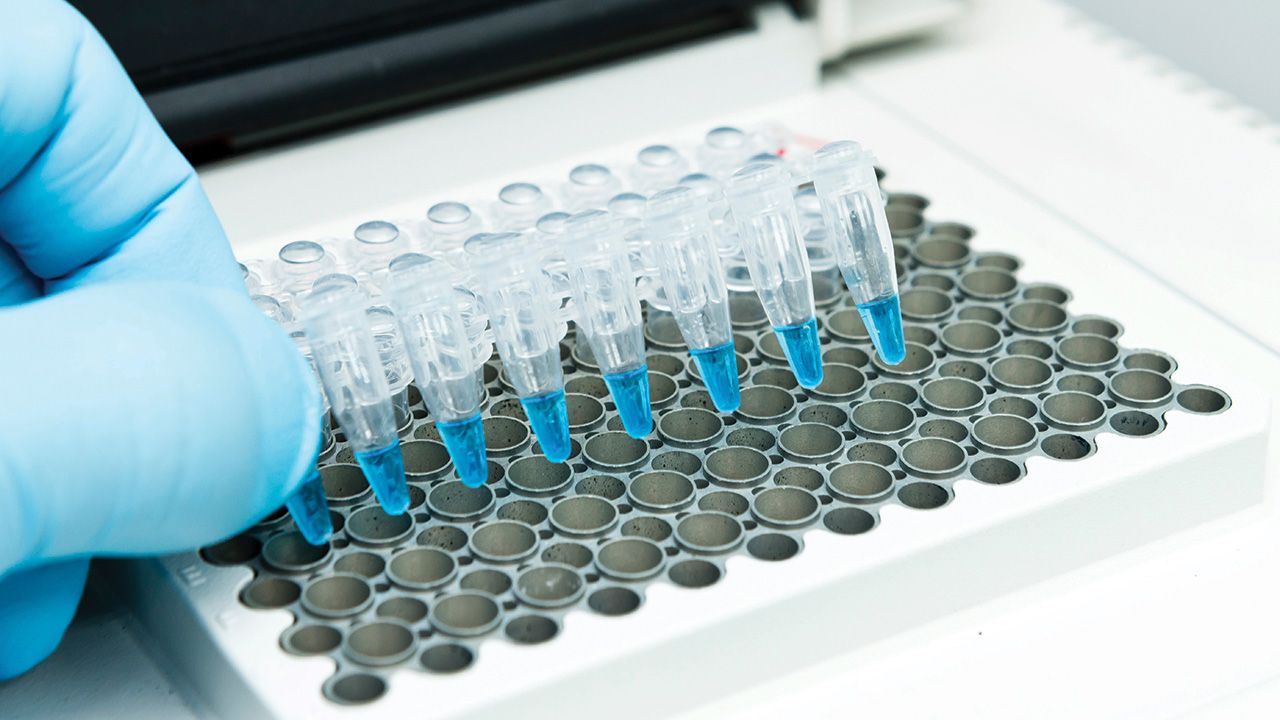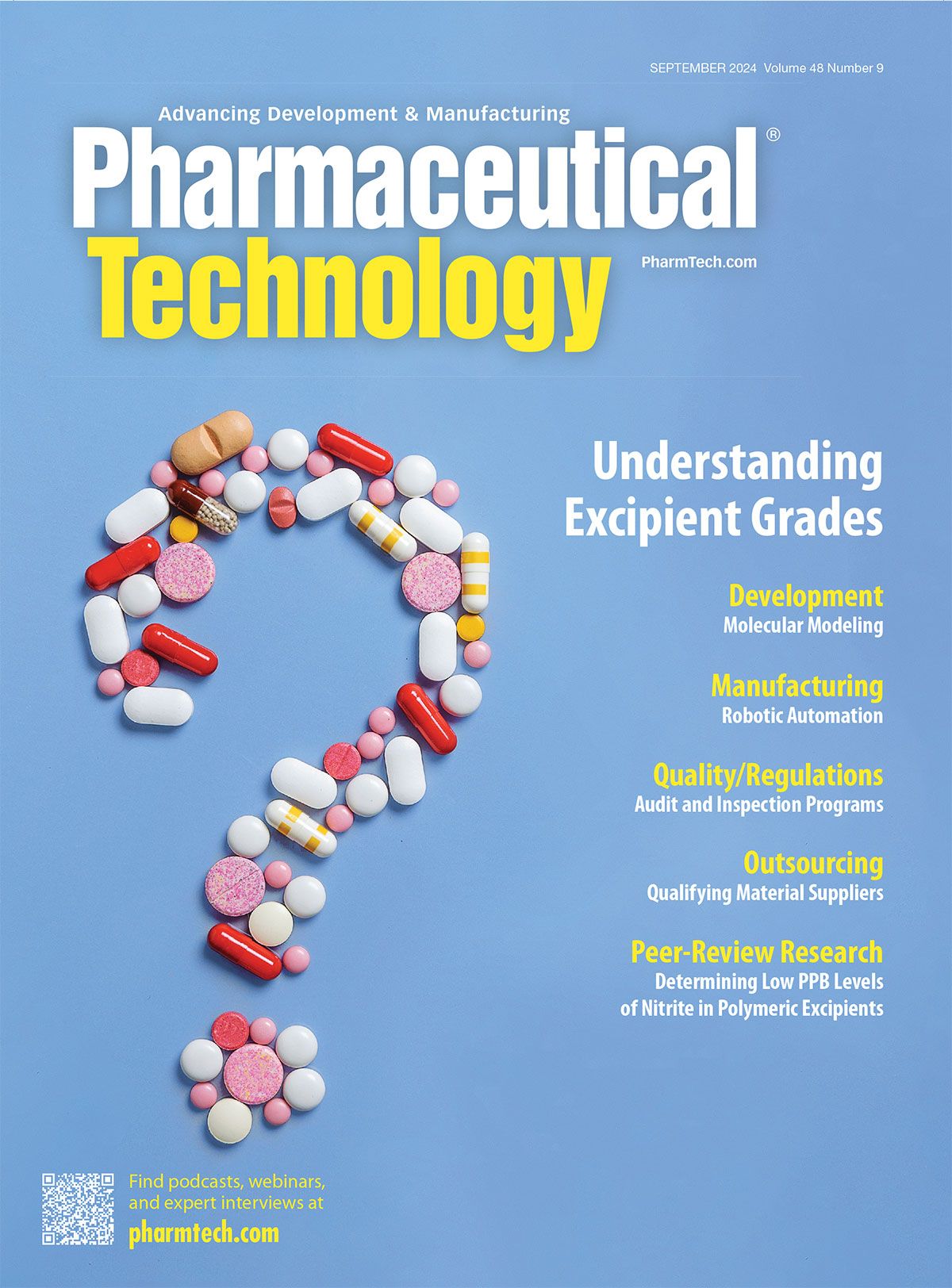Editor’s note: this article was published in Pharmaceutical Technology Europe’s Sept. 2, 2024 issue.
Meeting Adventitious Agent Testing Needs for Complex Modalities
Viral vectors and other complex biologic modalities require more specificity and higher sensitivity to detect and distinguish contaminants.
HYUNGKEUN/Stock.Adobe.com

Adventitious agent testing remains critical in biomanufacturing to help ensure product purity. As such, testing protocols from monoclonal antibody (mAb) manufacturing may be transferred to gene therapy manufacturing, as the optimization of testing practices are applicable to gene therapy manufacture.
For instance, in conducting tests to confirm a biological product’s safety, it is necessary to use multiple assays to ensure that various contaminants are identified. Several assays are commonly used in combination to test for adventitious agents, which is required by regulatory bodies, including the US Food and Drug Administration (FDA) and the European Medicines Agency. The two main types of assays for identifying adventitious agents are in-vitro and in-vivo assays. In-vitro assays are utilized when mammalian cell lines are used to produce biopharmaceuticals, while in-vivo assays supplement the in-vitro tests to detect viruses that are not able to be grown in cell culture (1).
Of more immediate concern is the fact that more complex modalities of biopharmaceuticals are prevalent in the industry pipeline. These complex modalities typically require more complex manufacturing processes, which means each product in development is a more significant investment of time and energy as well as patient trust. The current climate makes thorough biosafety testing procedures more crucial for biopharma developers (2).
The contamination risk
Adventitious agents comprise a broad range of contaminants, which are unintentionally introduced into the biomanufacturing process. These agents include bacteria, fungi, viruses, mycoplasma, parasites, and mycobacteria, among others. A common way that adventitious agents enter the biomanufacturing process is via starting materials that are animal or human origin. These materials include cell substrates, bovine serum, or the cell lines themselves, or may be introduced by the manufacturing operators, such as where manual handling or processes are concerned (2).
Inadequately tested biopharma products that end up with contamination run the risk of investigation, corrective action, and downtime in manufacturing that ultimately costs the manufacturer—and developer—millions of dollars or more. Therefore, having preventative strategies and comprehensive testing in place is imperative in biologics manufacturing. Another issue to consider is that contamination can happen at any point in the process between securing the cell bank to the fill/finish stages. To mitigate contamination risk and ensure efficient workflow, it is necessary to test for adventitious agents at multiple timepoints. It is also worth it to note that testing and detecting any contamination earlier in the manufacturing workflow, rather than just relying on testing prior to final product release, can better ensure that tainted product does not reach the market and can save time, cost, and effort (2).
Recommended detection methods
For virus detection, methods include traditional culture-based methods as well as electron microscopy studies, in-vitro molecular and antibody assays, sequencing methods such as massive parallel or next-generation sequencing, and degenerate polymerase chain reaction (PCR). Methods for detecting bacteria also include culture-based approaches and PCR but can also employ biosensor-based methods. Meanwhile, for other adventitious agents such as mycoplasma, detection can include PCR—this includes specific PCR kits, microbiological culture methods, and enzyme-linked immunosorbent assays (3).
Similarly, the adventitious agent testing requirements for viral vectors are consistent with the requirements for other modalities of biotherapeutic products, including selection of appropriate testing methods. However, a direct transfer of testing strategies used in recombinant proteins and mAbs may not necessarily be feasible or practical for viral vectors. Biological differences between viral vectors and large-molecule proteins hinder direct adoption of testing strategies (4).
Because viral vectors are themselves viruses, standard assays may need to be modified or alternative methods used for testing them. That factor can interfere with virus detection methods during adventitious agent testing. Other complications arise if cell-based assays are used to test live-virus vaccines, replication-competent gene therapy vectors, or vectors that exhibit the cytopathic effect. The issue stems from the fact that human cell lines are primarily used to develop cell-based assays, which are susceptible to human viruses. Adenoviral products, which are lytic viruses, will, for example, infect both human and primate-derived cell lines, which would invalidate the assay. On top of that, there is always the risk that cellular toxicity may occur (4).
If adventitious agents are detected, an important step is to identify the species and the origin(s) of the contamination. It is then important to evaluate the agents’ potential to infect humans (5). Some adventitious agents still find their way into the end product despite extensive detection efforts. Examples of these occurrences include the presence of porcine circovirus 1 found in a commercial rotavirus vaccine and a novel rhabdovirus in a Spodoptera frugiperda (Sf9) cell line (6–8).
Knowing the limits
Traditional in-vivo and in-vitro adventitious agent testing methods are usually sufficient, but they have their limitations. For one thing, test sensitivity may not be high enough to detect certain contaminants or too-low concentrations of contaminants. Some assays require lengthy times to perform. What’s more, different testing methods inherently have different sensitivities for detecting different contaminants, and each method has its own limitations. Fortunately, these different methods can complement each other and, when combined, can offer greater understanding of detecting adventitious agents (4).
The delivery times for some adventitious virus test results can be challenging, regardless of which testing methods are used. Some assays may take several weeks to generate results. On top of that, certain biotherapeutics, such as gene therapies, have short shelf lives, so waiting on results for adventitious agent testing may come too late. This is a concern for autologous cell therapies that are dependent on gene-modified components and must be administered to the patient soon after they are produced (4).
On the positive side, detection technologies for adventitious agent testing continue to evolve, with a focus on higher sensitivity, rapid methods, and broad detection ranges. The downside is that new technologies take time to develop, and they must be thoroughly validated to demonstrate their suitability and applicability before the bio/pharma industry and regulatory bodies will accept them for implementation into the testing strategies for adventitious agent control in biomanufacturing (9).
References
1. Sartorius. Adventitious Agents. sartorius.com (accessed 10 July 2024).
2. Thermo Fisher Scientific. Improving Adventitious Agent Testing in Biologics Manufacturing. thermofisher.com/blog/behindthebench, 9 Feb. 2023 (accessed 10 July 2024).
3. Morris, C.; Lee, Y. S.; Yoon, S. Adventitious Agent Detection Methods in Bio-Pharmaceutical Applications with a Focus on Viruses, Bacteria, and Mycoplasma. Curr. Opin. Biotechnol. 2021, 71, 105–114. DOI: 10.1016/j.copbio.2021.06.027
4. Challener, C. Adventitious Agent Testing for Viral Vectors. BioPharm International 2022, 35 (9), 40-44.
5. Klug, B.; Robertson, J. S.; Condit, R. C.; et al. Adventitious Agents and Live Viral Vectored Vaccines: Considerations for Archiving Samples of Biological Materials for Retrospective Analysis. Vaccine 2016, 34 (51), 6617–6625. DOI: 10.1016/j.vaccine.2016.02.015
6. Victoria, J.G.; Wang, C.; Jones, M. S.; et al. Viral Nucleic Acids in Live-Attenuated Vaccines: Detection of Minority Variants and an Adventitious Virus. J. Virol. 2010, 84 (12), 6033–6040. DOI: 10.1128/JVI.02690-09
7. Dubin, G.; Toussaint, J. F.; Cassart, J. P.; et al. Investigation of a Regulatory Agency Enquiry into Potential Porcine Circovirus Type 1 Contamination of the Human Rotavirus Vaccine, Rotarix: Approach and Outcome. Hum. Vaccines Immunother. 2013, 9 (11), 2398–2408. DOI: 10.4161/hv.25973
8. Ma, H.; Galvin, T. A.; Glasner, D. R.; Shaheduzzaman, S.; Khan, A. S. Identification of a Novel Rhabdovirus in Spodoptera frugiperda Cell Lines. J. Virol. 2014, 88 (12), 6576–6585. DOI: 10.1128/JVI.00780-14
9. Playter, G. Examining Next-Gen Technology for Adventitious Agent Testing. BioPharm International 2023, 36 (9) 36–38.
About the author
Feliza Mirasol is the science editor for Pharmaceutical Technology Europe.
Article details
Pharmaceutical Technology Europe®
Volume 36, No. 8
September 2024
Pages: 29–30
Citation
When referring to this article, please cite it as Mirasol, F. Meeting Adventitious Agent Testing Needs for Complex Modalities. Pharmaceutical Technology Europe 2024, 36 (8), 29–30.
